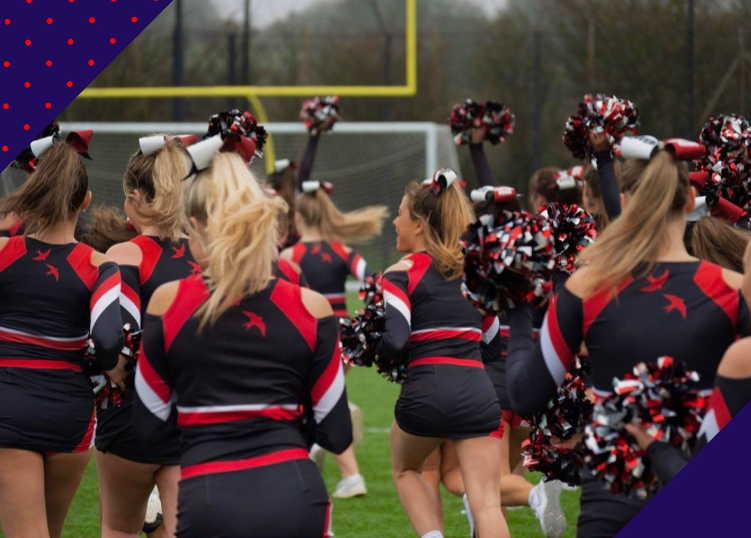Considered one of the newer sporting societies here at Sussex, the Swallows are an all-inclusive, non-competitive cheerleading game-day squad. Composed of around forty women, the team spans across all levels of background experience, and eagerly welcomes beginners. Autumn semester is all about perfecting their game day routine, with the long-awaited Spring semester being their time to shine at game day performances. Numerous setbacks, such as the closure of their training location, Mandela Hall, have left the Swallows fighting to meet the deadline for their first performance. All their hard work and training leads up to the ultimate performance – the Brighton vs Sussex Varsity.
In recent years, the cheerleading industry has advanced tremendously, leading to debates on whether it should be classified as a ‘real’ sport. In 2021, the International Olympic Committee finally deemed it as such, with hopes of incorporating cheerleading in the 2028 Los Angeles games.
Yet, despite the acknowledgement of the sport by professionals, societal perceptions of cheerleading are often incorrect. What the Swallows do in their game-day routine is a real test of athleticism, which many might overlook. Cheerleading routines require an immense sense of stamina and resilience, where non-stop stunting, tumbling and dancing is incorporated into a packed four minute routine.

I asked the Swallow’s Choreographer Ruby Wheeler for an insight on her inspiration for the upcoming game-day routine. “I watched a lot of videos on YouTube of American High school cheer routines”, she explains, “I liked the idea of having a mashup of songs which included different types of music, whilst still sticking to the basics of cheer.” This is evident in the stunting and pom pom’s used in the routine, which make up a large component of the Swallow’s game-day routine.
Stunting is when a collection of team members – known as a stunt group – work together to lift and manoeuvre a ‘Flyer’ through the air. Pairing the right group together for stunts is essential: if something goes wrong mid-performance, it can ruin the routine’s flow and, more than often than not, cause serious injury. Arguably, above anything else cheer is all about trust in your fellow team-mates – and rightly so.
According to Geisinger, recent studies have found that cheerleading is the most dangerous sport for women, with over 30,000 cheerleaders going to the hospital for cheer-related injuries in the US alone. As part of the Swallows myself as a Backspot for the team, the most important part of my job is making sure that I maintain the balance for everyone, and catch the Flyer safely when it’s time to come down.
Despite all of the potential dangers within the sport, such as concussions and broken bones, the Sussex Swallows train twice a week with no designated coach. Instead, they use a word-of-mouth approach when it comes to training new members. A stream of information trickles down through the years, giving the society a relaxed and welcoming atmosphere compared to other sports teams.
“Swallows is a good way to forget about the stress of uni work and assignments”, agrees Ruby, “my favourite part about being on the team is honestly the people, because I have met so many friends for life.”
Like most sporting societies, a large part of Swallows team-building comes from the Wednesday sports night socials. If you don’t get the chance to attend one of their game-day performances, you’re likely to see the Swallows in Walkabout, wearing an extravagant themed social outfit and playing ‘Zumi Zumi’ – you’ll know who they are!
